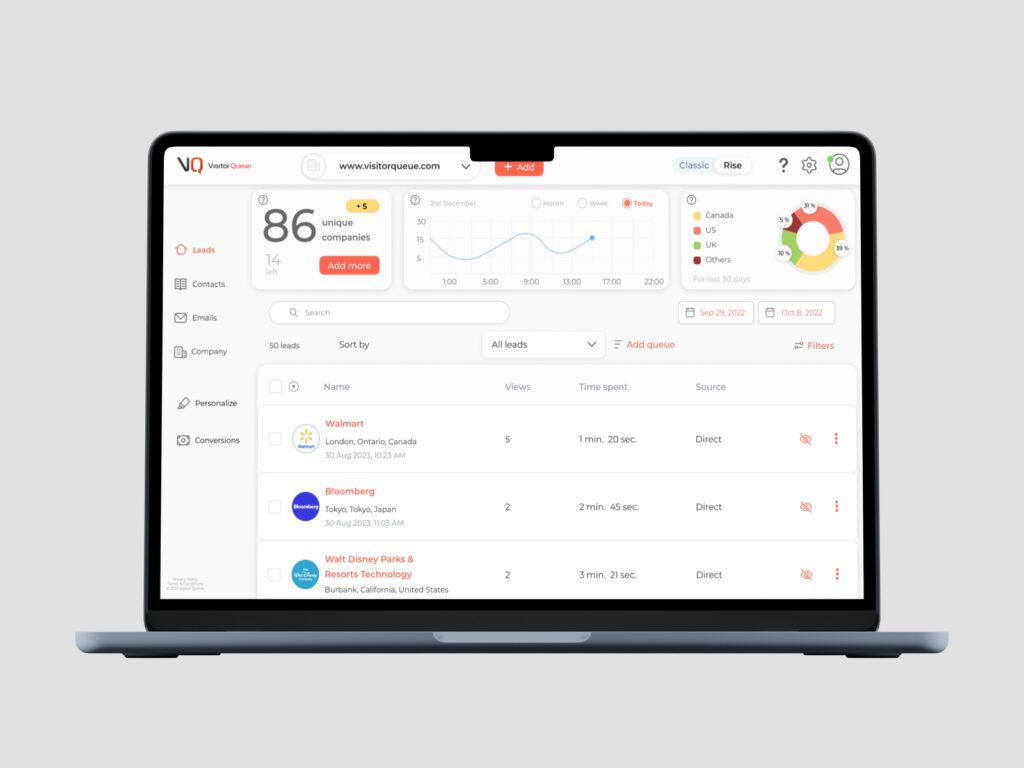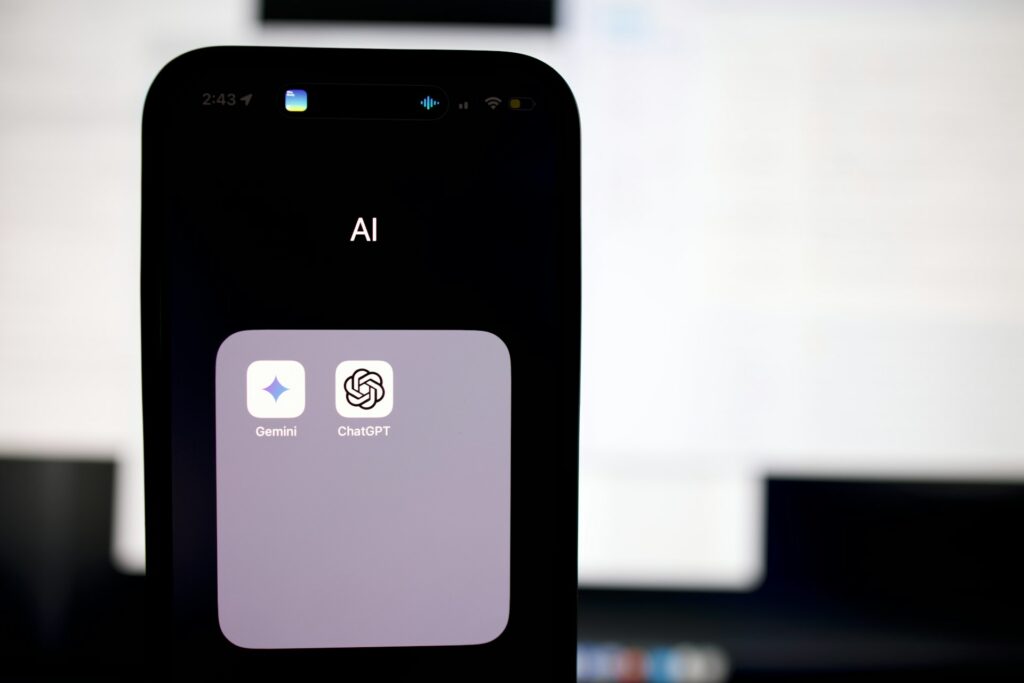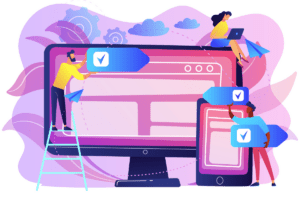As marketers, we are always on the hunt for new tools and software to improve our work. This is where generative AI, or genAI, comes into play. It has the ability to create original text, images, and even video, and many businesses are already weaving it into their workflows. But what does that actually mean for marketing teams, and how can you use it without losing the human touch that makes your brand stand out? In this article, we will break down what generative AI is, the advantages and drawbacks of using it, and then share practical ways you can put it to work in your campaigns.
What Generative AI Really Is
By definition, generative AI is a software that can create new content after being trained on large sets of data. Instead of simply recognizing patterns or predicting outcomes, it can write a blog draft, design an image, or suggest a video script based on what you ask it to do. Think of it as a creative partner that can help you get from a blank page to a first draft much faster. It doesn’t replace your judgment, brand strategy, or creativity, but it can get you past the “getting started” stage that often takes the most time.

The Upsides of Using Generative AI
There’s no denying the time-saving aspect. Writing copy, brainstorming campaign ideas, or pulling together visual concepts takes time. Generative AI speeds up those tasks so you can focus on the bigger picture.
Another strength is scale. Small teams often struggle to keep up with the constant demand for content. With AI tools, it’s easier to produce multiple variations of copy, test them, and find what resonates with your audience.
And then there’s personalization. Customers want to feel like brands understand them. Generative AI makes it easier to tailor messages to different audience segments, whether that’s email subject lines, product recommendations, or ad copy.
The Downsides of Using Generative AI
As exciting as AI is, it’s not the be all and end all of your marketing strategy. Generative AI sometimes gets things wrong. It can make up details, use outdated references, or produce content that sounds polished but lacks substance. That means marketers need to double-check the accuracy of everything before publishing.
Another limitation is voice. AI output can come across as generic or off-brand if you use it word-for-word. Customers can tell when content feels flat, and that hurts trust. To keep your brand personality intact, you’ll always need a human touch in the editing process.
Finally, there’s the ethical side. Copyright issues, data privacy, and questions of originality are still being debated. Marketers should approach AI as an assistant, not a replacement, and stay mindful of how it’s being used.
10 Ways Marketers Can Use Generative AI
So how can you actually put generative AI to work? Here are some of the most practical and effective applications for marketing teams.
1. Content Creation
One of the biggest challenges for marketers is keeping up with the demand for content across different platforms. Blogs, newsletters, social posts, ad copy, it adds up quickly. Generative AI can give you a strong draft to work from, which often saves the most time. Instead of facing a blank screen, you get a workable version that can be edited and polished into something that fits your brand voice. For example, a team planning a new product launch could generate a set of blog outlines and headlines in minutes. While not everything will be usable, it sparks ideas and shortens the creative process. The role of AI here isn’t to do the job for you, but to help you move from idea to execution more efficiently.
2. Personalizing Customer Experiences
Personalization is what makes a customer feel valued rather than just another email address on a list. Traditionally, building personalized campaigns required detailed segmentation and hours of manual work. With generative AI, marketers can scale this process by producing messages that speak to specific groups or even individuals. Imagine sending a follow-up email after someone downloads a guide. Instead of one generic response, you could create several variations based on industry or job role. This kind of personal touch increases the chances of engagement and conversion. This way you can experiment more often without stretching yourself too thin.

3. SEO Strategies
Search visibility depends on creating content that matches what people are searching for, and that’s often harder than it sounds. Generative AI can suggest blog topics, alternative headlines, and meta descriptions that give you more opportunities to appear in search results. For example, instead of only targeting “CRM software,” AI tools might surface ideas like “CRM software for startups” or “CRM tools with automation.” These long-tail keywords are easier to rank for and more relevant to specific audiences.
4. Visual Content
Visuals are a core part of marketing, but not every team has the time or budget to work with designers for every campaign. Generative AI makes it possible to create images, graphics, and even simple design concepts on demand. This can be especially useful for mockups or brainstorming, when you need a visual to communicate an idea quickly. For example, a social media manager could generate several graphic concepts for an upcoming campaign, then refine the best one with a designer. Canva has a number of great AI features that are easily accessible to marketers at all skill levels to try out.
5. Email Marketing
Email is one of the most reliable marketing channels, but creating subject lines, body copy, and calls-to-action can be repetitive. Generative AI helps speed this up by producing multiple variations in seconds. Marketers can then test and compare which versions drive better open or click-through rates. Instead of one generic subject line, AI can generate ten different versions focused on urgency, curiosity, or exclusivity. Testing these variations makes it easier to identify what resonates with subscribers and refine future campaigns.
6. Social Media Management
Each channel requires unique messaging, and audiences expect frequent updates. Generative AI can ease the burden by drafting captions, suggesting hashtags, or even creating quick content ideas. This helps marketers spend less time planning and more time engaging with their communities. If you’re running a campaign for a seasonal product, you could generate a week’s worth of posts with different angles, like educational, entertaining, or promotional. Even if you only use some of the suggestions, it speeds up the planning process and ensures you never run out of content ideas.

7. Market Research
Understanding what customers want is at the heart of every strong marketing strategy. Tools like ChatGPT can help by analyzing survey results, customer feedback, and online reviews, then summarizing the main themes. This makes it easier to identify patterns that might otherwise be hidden in large amounts of data. AI can group the most common compliments or complaints into clear categories. A marketer can then use these insights to shape messaging, improve content, or even suggest product changes. It doesn’t replace detailed research, but it does make processing information much faster.
8. A/B Testing
A/B testing is critical for refining campaigns, but creating enough variations of copy or design can take a lot of time. Generative AI can generate multiple headlines, CTAs, or even ad images in minutes, giving marketers more material to test without extra effort. For example, instead of only testing two subject lines in an email campaign, you could test five or six. More variations mean more data, and more data leads to better decisions. This kind of support lets teams optimize campaigns more frequently, which usually results in higher engagement and conversion rates over time.
9. Storyboarding and Video Scripts
Video has become one of the most effective ways to connect with audiences, but producing it requires planning. AI can help you draft scripts or outline storyboards, giving you more of a framework to build from. This saves time in the brainstorming stage and helps creative teams get aligned before production begins. Even if the final version is heavily edited, having a base script speeds up the process.
10. Chatbots and Customer Support
Customer support teams are often stretched thin, and customers expect quick responses. AI-powered chatbots, like Zapier’s, can help keep customers engaged and help solve problems faster based on documentation that you provide. Additionally, if you don’t have an around the clock support team, AI can cover your offline hours. This reduces frustration and builds confidence in the brand’s support system.
How to Measure Campaign Success
Using generative AI is only valuable if you know it’s driving results. That means tracking engagement, conversions, and lead quality instead of just creating more content. Visitor Queue makes this simple by showing you which companies visit your website and how they interact with your campaigns. With these insights, you can see what’s working, adjust quickly, and turn more visitors into customers. Additionally, with our employee contact information, you can reach out to ensure they found what they were looking for. Try Visitor Queue for free today and stop losing leads.

Final Thoughts
Generative AI has already proven to be a great tool for marketers, offering efficiency, personalization, and scalability. But like any tool, it must be used wisely. Marketers who rely solely on AI without applying human insight risk losing authenticity and connection with their audience. The most effective approach is a hybrid one: use generative AI to handle the heavy lifting and brainstorming, then refine the output with your brand’s unique voice and perspective. As always, if you have any questions about using Visitor Queue to measure campaign success, don’t hesitate to reach out.
 Identify
Identify Personalize
Personalize Benchmark
Benchmark Agencies
Agencies Integrations
Integrations Case Studies
Case Studies Use Cases
Use Cases Blog
Blog Resources
Resources









